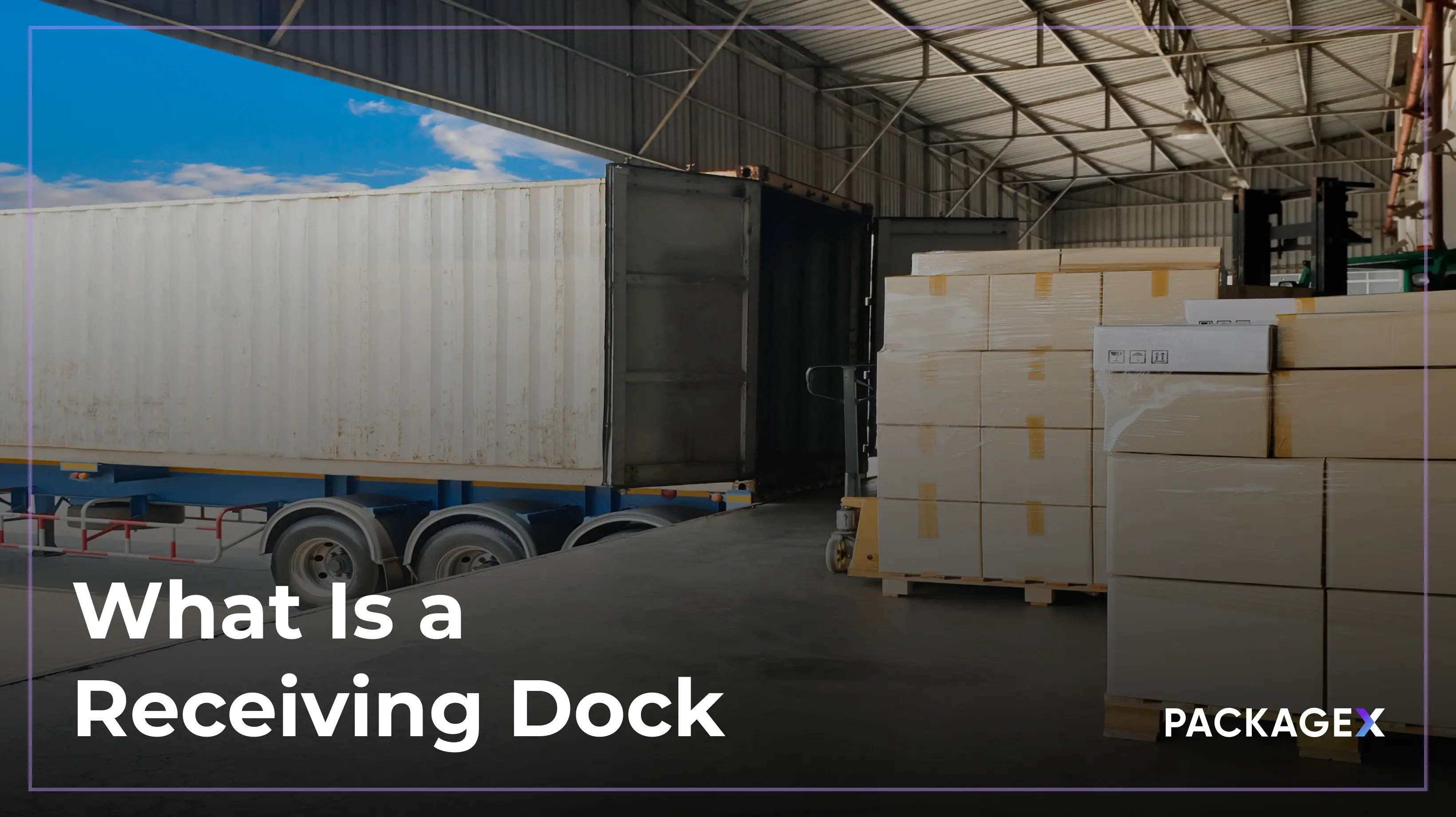Ecommerce warehouses are immensely important in supporting the growth of online businesses. As your business scales, warehousing needs to evolve, and efficient storage and ecommerce inventory management takes center stage. Whether you're storing products at home or partnering with third-party logistics (3PLs), optimizing your ecommerce warehouse can help you save money and time while keeping customers satisfied. This blog explores the best ecommerce warehouse solutions to help you streamline your supply chain.
What Is an Ecommerce Warehouse?
An ecommerce warehouse stores physical goods prior to their online sale. The primary function of warehousing in ecommerce is to securely store products, monitor their locations, record arrival times, track how long items have been in stock, and maintain real-time inventory counts.
Why Is Ecommerce Warehousing So Important?
Ecommerce warehouse management is the supervision of daily warehouse operations, including inventory control, equipment maintenance, staff management, and safety compliance. It also involves forecasting shipping volumes and labor demand, as well as managing shipments.
Effective ecommerce warehouse management becomes a priority as your online business grows. It helps you avoid stock-outs, over-purchasing, and running out of storage space. Without it, you risk losing inventory, shipping the wrong products, and wasting money on excess stock. Strategic management ensures you have the right inventory levels and can scale efficiently as your business expands, optimizing both space and resources.
What Are the Different Types of E-commerce Warehouses?
There are several types of ecommerce warehouses available to fit the unique needs of different businesses. Here’s an overview of some of the most common types of ecommerce warehouses and when they can be most beneficial:
Private Warehouses
Private ecommerce warehouses are owned or leased by a single business for exclusive use. This option gives you full control over ecommerce warehousing and order fulfillment; however, the costs and responsibilities are higher.
At-Home Warehouses
For small businesses or entrepreneurs just starting out, at-home ecommerce warehouses, like garages or basements, are used for storing products. This cost-effective solution works best for businesses with low order volumes.
Public Warehouses
Public ecommerce warehouses are third-party facilities where businesses rent space alongside other companies. This cost-effective solution can include shared storage and additional services like packing and shipping.
Bonded Warehouses
Bonded warehouses are special storage facilities that allow you to keep imported goods duty-free until you pay customs duties. This arrangement is particularly advantageous for Ecommerce retailers involved in cross-border trade, as it provides a secure space to store inventory without incurring immediate costs.
Fulfillment Centers
Fulfillment centers manage the ecommerce storage, packing, and shipping of products for e-commerce businesses. These centers are often outsourced to third-party providers, allowing you to streamline your operations.
On-Demand Warehousing
On-demand warehousing allows you to rent storage space for short periods. This flexible option is ideal for handling seasonal sales or temporary inventory surges and helps you avoid long-term storage commitments.
How to Select the Right Warehouse for Your Ecommerce Business
Following these steps can help you find the best ecommerce warehousing solution tailored to your business needs:
- Determine Your Spatial Requirements: Assess your current inventory and turnover rate to determine how much storage space you need. This will help you select an ecommerce warehouse that fits your needs.
- Consider Essential Equipment: Think about the equipment required for optimal performance. Depending on your products, you may need shelving, forklifts, and specific shipping supplies. If you handle perishable items, consider refrigeration needs.
- Collect and Analyze Data: Collect data regularly to ensure efficiency. Track key metrics, such as fulfillment times and return rates, to inform your operational decisions and improve performance.
Internal vs. External Ecommerce Warehousing
Best Practices for Efficient Ecommerce Warehouse Management
By adopting best practices and effective strategies, you can optimize your processes and enhance your profitability:
Use a Warehouse Management System (WMS)
This specialized software provides real-time insights into inventory levels, streamlines order fulfillment, and allows you to forecast stock needs. Integrating your WMS with your eCommerce platform can simplify inventory tracking and make reordering products much easier. When your systems talk to each other, you gain visibility into stock availability and can manage your supply chain more effectively.
Automating Processes
To meet the growing demands of online shopping, repetitive tasks like inventory management and order processing need to be automated to enhance efficiency, reduce errors, and speed up fulfillment. In a competitive e-commerce landscape, ecommerce warehouse automation isn’t just an advantage—it’s a necessity for ensuring smooth workflows and delivering the fast, reliable service customers expect. It’s a smart way to improve ecommerce warehouse performance and keep up with industry demands.
Distribute Your Inventory Across Multiple Ecommerce Warehouses
This can significantly reduce shipping costs and delivery times. By storing products closer to your customers, you can ensure quicker dispatch and enhance the overall shopping experience. Coupled with this, consider implementing various picking systems to find the most efficient method for your order volume. Techniques like batch picking can minimize walking distances and time spent on fulfilling orders.
Set Inventory Minimum Points
By establishing minimum thresholds for each product, you can proactively manage restocking and avoid the pitfalls of overstocking or running out of popular items. This strategy helps balance inventory costs while ensuring that your customer’s needs are met promptly.
Define KPI for Ecommerce Warehouse
You should define key performance indicators (KPIs) and set up effective data collection processes. Tracking the right KPIs gives you valuable insights into warehouse operations, helping you identify bottlenecks and areas for improvement. Monitor your order accuracy, inventory turnover, or fulfillment speed, so that, you can stay on top of operations and ensure your ecommerce warehouse runs smoothly.
Maintain Quality Control
Strict quality control measures should be implemented at every stage of the ordering process. Start with the receiving stage by setting clear guidelines for what qualifies as an acceptable product. By implementing these measures, you can consistently deliver high-quality service for optimum customer satisfaction.
Examine Your Daily Operations
Organize your warehouse so that frequently ordered items are easily accessible. Regularly evaluate your inventory management practices to keep excess inventory in check and mitigate potential losses.
Prioritizing workforce management is essential for running an efficient ecommerce warehouse. Hire skilled employees and provide regular training for efficient operations. Implementing incentive programs can also motivate your team.
Repurpose Dead Stock
Repurposing dead stock is a practical way to reduce costs in your ecommerce warehouse. Deadstock refers to items that are no longer expected to sell, and keeping them around can become a significant expense. Instead of letting this unsold inventory take up valuable space, consider finding ways to repurpose or liquidate it. By doing so, you can free up warehouse space, minimize losses, and potentially recover some of the costs associated with unsellable items, improving overall ecommerce warehouse efficiency.
How PackageX Helps With Ecommerce Warehouse Optimization
PackageX enhances ecommerce warehouse efficiency through real-time inventory tracking, automated stock updates, and simplified order fulfillment. Our platform supports various fulfillment models and integrates with multiple carriers for competitive shipping rates. With AI-powered OCR for data capture and a centralized dashboard for visibility, you can make informed decisions for improvement. Flexible integration options and a cloud-based system ensure accessibility and scalability. By adopting PackageX, ecommerce warehouses can reduce manual errors, improve order accuracy, and optimize space utilization, leading to increased customer satisfaction and lower operational costs. Get a demo and transform your ecommerce warehouse with PackageX today!
{{returns-webinar}}
FAQs
How do you set up an ecommerce warehouse?
Here are some steps to get started with your ecommerce warehouse setup:
- Assess warehouse space needs based on your inventory.
- Get essential equipment like shelving and packaging tools.
- Automate repetitive tasks to improve efficiency.
- Optimize pick paths for faster order retrieval.
- Set clear guidelines for inventory and shipping processes.
- Choose a warehouse management system for ecommerce to handle orders and inventory.
- Integrate all systems for seamless operations.
What is the meaning of ecom warehouse?
Ecommerce warehousing means storing physical products before they are sold online. It focuses on the safe and secure storage of goods as well as tracking their location, arrival dates, time spent in stock, and current inventory levels. This eventually leads to efficient inventory management and smooth order fulfillment.
What is a reason a company would want its own warehouse?
A warehouse is a link in the supply chain that reduces production costs and enhances transportation efficiency. It allows ecommerce companies to manage inventory effectively, especially when production levels exceed demand. By storing excess items in a warehouse, you can avoid overstocking issues and meet demand when it rises. This balance helps control costs and maintain smooth operations.




